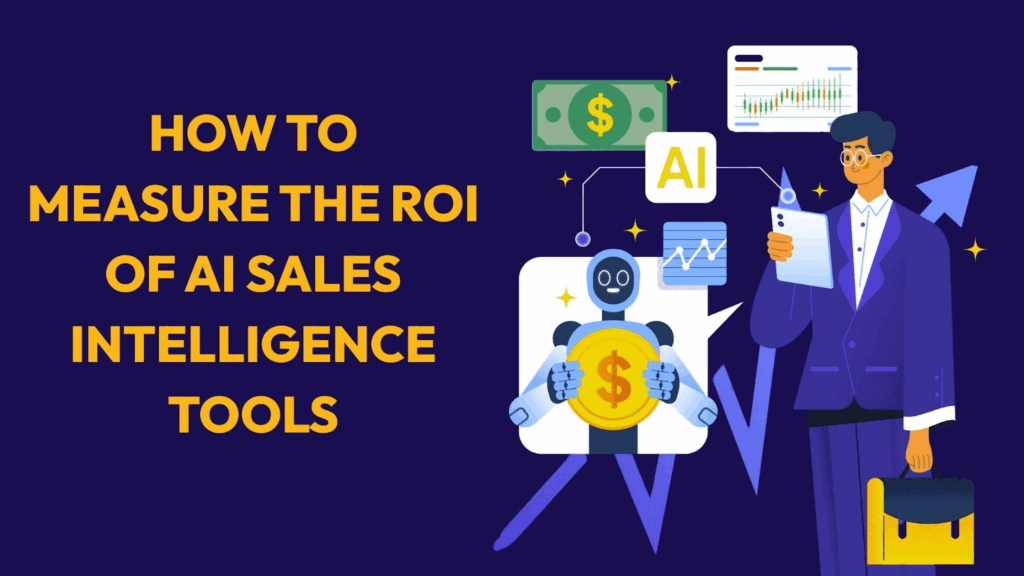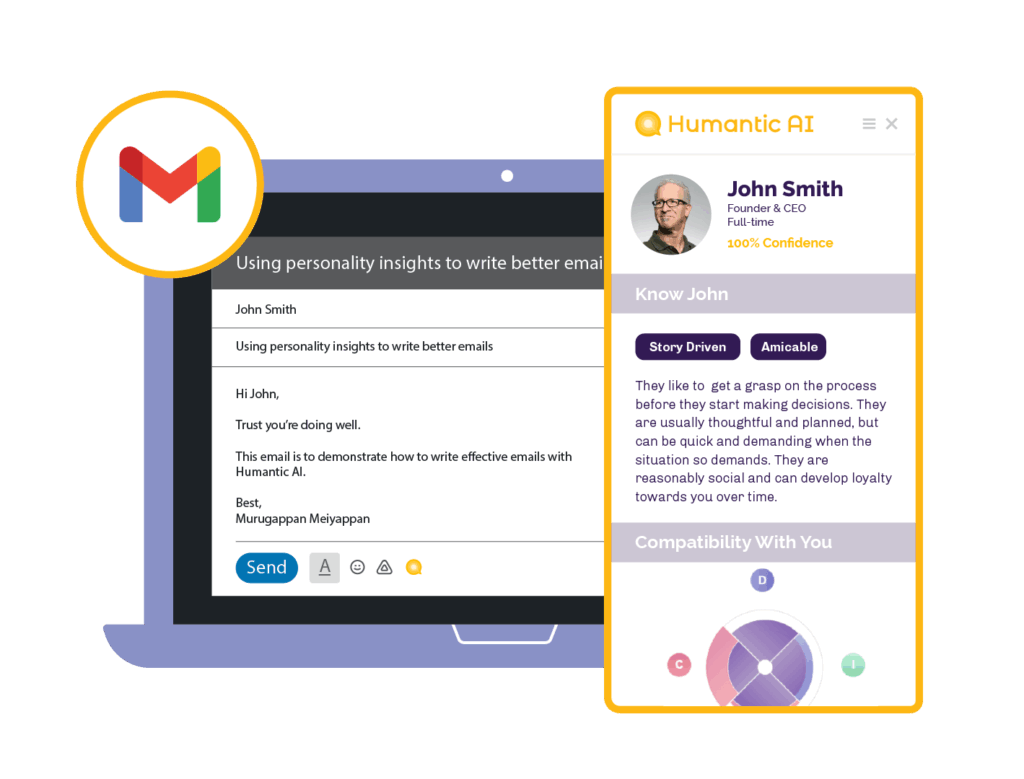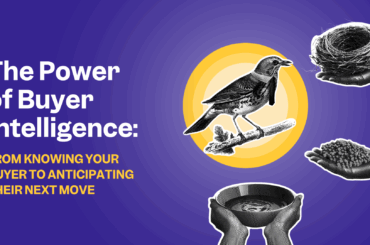
The Growing Pressure to Prove Sales Tech ROI
AI spending is booming — but is it delivering?
Enterprise spending on AI tools surged 6x in 2024, yet 63% of companies were underconfident in hitting their revenue goals. Today, AI’s big promise is colliding head-on with the tough reality of inflated expectations, vague attribution, and thin measurement frameworks.
Gartner predicts that, by 2025, nearly 30% of AI projects will be discarded post proof-of-concept stage. And, the inability to demonstrate tangible results will be one of the core reasons for it.
In sales — the lifeline of any organization — this is particularly an expensive inefficiency. Buying tools on aspirational outcomes is a thing of the past. With a tsunami of LLM-backed agents hitting the market, executives are now being forced to demonstrate, in very real terms, the value of every sales tool in their stack.

But the real challenge for leaders isn’t only deciding what to buy. It’s building the right measurement framework to back up what works, what doesn’t, and where to double down on AI investments.
This blog lays out a 3D framework — based on revenue generation, sales productivity, and buyer alignment — for measuring the ROI of AI sales intelligence tools. This will ensure every sales tech AI investment is driving meaningful, measurable results.
Defining Your ROI Baseline
Establishing the ROI baseline is the most crucial step in solving the AI attribution challenge. Without this, sales leaders can’t prove the before and after impact of AI tools.
A reliable foundation blends both leading and lagging indicators for a full picture.
- Lagging indicators are the hard outcomes that prove the tool’s financial value. They cover the ultimate impact on revenue, win rates, and customer acquisition cost.
- Leading indicators are the soft signals that change the sales velocity, the quality of buyer engagement, or pipeline coverage. They track the sales rep’s behavioral changes and process improvements that happen before a deal closes.

Here is a sample KPI framework to get you started:
| KPI | Why It Matters | Example Measurement |
| 🕒Sales Cycle Length | Faster revenue realization. | Days from first meeting to close. |
| 🎯 Win Rate by Persona Fit | Targets high-fit buyers. | % closed-won with ICP accounts. |
| 💰 Revenue per Rep | Productivity in dollars. | Revenue ÷ active reps. |
| 📊% Qualified Accounts | Better pipeline quality. | % accounts meeting qualification criteria. |
| 🚀 Ramp Time Reduction | Quicker new hire productivity. | Days to first quota hit. |
Establishing baseline metrics makes it easier to make the business case for AI tools with confidence.
Evaluate AI-human Collaboration, Not Just AI Automation
A fundamental misconception about AI is using it just as a task automator. But, automation is table stakes in enterprise sales. The real ROI lies in how well it augments human performance. The best sales teams use AI to co-strategize — personalizing messages at scale, adapting to buyers faster, and sharpening decision-making.
Here’s a table that explains it:
| Dimension | Automation-focusedAI Tools | Augmentation-focusedAI Tools |
| Goal | Focuses on replacing human effort | Enhances human judgment & creativity |
| Outcome Quality | Limited by training data and rigid logic | Adapts to context, improves over time with human feedback |
| Speed | Accelerates repetitive tasks | Maintains speed while improving strategic output |
| Decision-making | Can produce correct answers to wrong questions | Guides better questions and smarter answers |
| Adaptability | Struggles in new or nuanced scenarios | Thrives with human insight in evolving contexts |
| Verdict | Efficiency without depth | Competitive advantage through better decisions |
| ROI Ceiling | Limited — capped by total time saved per rep. | Expanding — scales with skill level, market complexity, and strategic adoption. |
| Impact Horizon | Immediate but plateaus quickly. | Compounds over time as the team applies insights more effectively. |
| Key Metrics | 1. % of tasks automated2. Hours saved per rep3. Reduction in manual admin | 1, %Win rate improvement2. Sales velocity gains3. Personalization effectiveness4. Buyer alignment score5. Messaging consistency |
If a tool isn’t actively changing how your sales team thinks, decides, and executes, it’s not augmentation, it’s just expensive automation.
Calculating the Math Behind AI’s Impact

Traditional KPIs aren’t designed to capture AI’s exponential impact. For instance, conventional sales touchpoints like email sends, calls logged, demo requested, and more pop up in the CRMs. But, AI tools work in the shadows — influencing behaviors, shaping buyer perceptions, or accelerating internal decisions. This subtlety is rarely reflected tangibly.
The secret lies in deductive metrics, connecting what AI actually improves to what ultimately drives revenue. For example:
The current revenue of ACME is $10M. Their outbound represents 30% of the total pipeline.
A new AI tool for faster buyer research and email personalization is introduced. It improves email response rates by 100% (doubling responses). Based on the historical data, this translates to a 40% increase in outbound pipeline. What is the AI impact here?
AI Revenue Impact = 40% × 30% × $10M = $1.2M additional revenue
It’s like a chain reaction: AI provides solid prospecting and personalization capabilities → which improves email response rates → which increases pipeline → which drives revenue.
The math is simple once the relationship is established. Following the A/B test framework, map out the success metrics of ‘A’ (AI-assisted deals) versus ‘B’ (baseline deals) and get the differential to calculate the downstream revenue impact of any upstream AI improvement.
The key is being methodical about tracking usage versus outcomes, not just hoping the tools work. Here’s how to implement this approach:
Before AI: Overall win rate; After AI: Win rate differential
Compare deals where AI was actively used versus those where it wasn’t. This is your most direct path to revenue impact calculation.
Before AI: Revenue per rep; After AI: Revenue lift by adoption level
Segment your reps by how much they actually use AI tools. The top adopters often show 2-3x revenue performance differences.
Before AI: Activity volume (calls made, emails sent); After AI: Quality-weighted engagement
Instead of counting activities, measure response rates, meeting-to-opportunity conversion, and buyer advancement velocity with AI insights.
AI’s impact isn’t linear. It can multiply exponentially when combined with better targeting, timing, and messaging. The next step is knowing how to quantify that advantage in a way that resonates with the leadership team.
Use a Composite ROI Score for Board Reporting
Board members and CFOs don’t want a 20-slide presentation on “behavior change” and “strategic decision quality”. They want a single, consolidated number to compare with other investments.
That’s where the Composite ROI Score comes in. This single score captures the full value of AI sales intelligence with detailed operational tuning.
Here is a simple (weighting) blueprint for building a composite score:

- Revenue Velocity Impact (40% weightage): Progressions in sales cycle, win rates, average deal size, and pipeline conversion, directly connect to the outcomes boards understand and carry the highest weighting.
- Productivity Amplification (30% weightage): Metrics like time to first meeting, proposal revision drop, and reduction in internal escalations highlight efficiency gains that directly impact capacity and scaling potential.
- Strategic Effectiveness (20% weightage): Indicators such as relationship sustainability, competitive positioning, multi-threading efficiency, and deal revival rate predict long-term advantages that justify continued AI investment.
- Organizational Learning (10% weightage): While metrics like knowledge transfer, rep confidence, coaching quality, and cross-team collaboration have the smallest weighting, these metrics determine whether AI benefits sustain beyond initial implementation.
The result? One composite ROI score that satisfies finance, guides operations, and keeps AI accountable for more than hype.
Board-ready Presentation Format
Frame the value of AI investment with a clear narrative for impact. For example: “Our composite ROI score shows a 29% uplift, driven by a 15% boost in sales velocity and an 11% lift in competitive win rates — translating into $100K additional revenue per rep each quarter and $70K in productivity savings.”
This makes the AI-influence concrete. But even strong numbers mean nothing if they are floating in isolation. That’s where benchmarking comes in.
The Benchmarking Reality
Context is what turns a number into a strategic decision. To benchmark effectively, compare your results against:
- Industry standards for similar tools, to see if you’re ahead of the curve.
- Competitors’ reported gains, to assess your market standing.
- Internal performance targets, to track progress against your own goals.
The power isn’t just to measure — it’s to interpret. When you know whether you’re outperforming or underdelivering, you can decide whether to double down, course-correct, or reallocate resources.
Humantic AI: Measurable ROI Through Deep Buyer Intelligence
Buyer Intelligence platforms like Humantic AI deliver augmentation at scale through their unique deep focus on understanding buyers and their companies. With both personality-based buyer insights and comprehensive account research through Miia (their multi-agent account AI platform), Humantic AI provides a complete 360° view of buyers and accounts. The result: augmentation that enhances sales judgment and enterprise deal success.
Recognition as a Gartner Cool Vendor in AI-led Sales Research for 2024 validates this unique approach to deep buyer and account understanding, confirming the platform’s ability to deliver tangible results in enterprise B2B selling.
Impact Across Sales Cycle
Enterprise sales teams use Humantic AI across the sales stages, and here’s how it benefits them:
Comprehensive Account Intelligence

B2B buying involves complex organizational dynamics. Humantic AI’s account research capabilities help sales reps understand the complete landscape by:
- Conducting deep account research covering business overview, financial performance, and strategic priorities.
- Mapping organizational structures and buying committee hierarchies with recent movements.
- Analyzing industry trends and competitive positioning within the prospect’s market.
- Identifying relevant business triggers and contextual factors driving decision-making.
- Understanding how your solution specifically addresses their challenges and strategic initiatives.
Enterprise Account Penetration
B2B buying involves multiple stakeholders. Humantic AI’s Personality AI and DISC profiling helps sales reps analyze every stakeholder in the deal and move beyond trial and error to:
- Segment buyers by psychographics for tailored engagement.
- Score leads against proven win/loss personality patterns.
- Refine ICP definitions with behavioral data.
One of Humantic AI clients recorded a 22% increase in win rate by aligning sales motion to buyer psychology.
Improved Outreach Personalization

By providing insights into a buyer’s communication style, motivators, and decision-making preferences, the platform helps sales teams craft messaging that resonates. The payoff: higher response rates and faster qualification cycles.
Competitive Displacement Scenarios
In vendor shootouts, comprehensive intelligence often tips the scales. Sales teams can:
- Highlight buyer priorities competitors overlook.
- Position offerings in line with business contexts and buyer motivations.
- Deliver stakeholder-specific messaging.
- Pre-empt objections using both company- and individual-level intelligence.
A McKinsey study showed that sellers who consistently adapt to buyer psychology and organizational context achieve 15–25% better close rates.
Faster Multi-threading
With Buying Committee Maps and account intelligence, sales teams expand influence across decision-makers faster. This allows them to build consensus with contextual messaging while advancing deals with greater efficiency.
The Adoption Reality Check
AI insights only matter if they are put into practice by reps. Humantic AI sidesteps this with its native integrations for tools like LinkedIn, CRMs such as Salesforce and HubSpot, and various Sales Engagement Platforms. This way, insights appear where reps already work, without extra clicks or tools.
This seamlessness ensures behavioral change sticks, which is the ultimate ROI driver.
Conclusion: Focus on Strategic Lift, Not Feature Adoption
The success measurement of AI sales intelligence tools is no longer adoption-only. Rather its ROI depends on deeper outcomes like stronger buyer alignment, higher-quality decisions, and improved strategic execution.
The full spectrum of AI’s value creation hinges on 3 pillars: clear baseline establishment, differential KPI modeling, and composite ROI tracking. And sales leaders who follow this to the T, gain both: operational lift across sales cycle and boardroom confidence with defensible ROI justification.
But the responsibility shouldn’t fall entirely on sales teams. Vendors must build ROI measurement directly into their platforms. At Humantic AI, embedded ROI tracking is one of their major initiatives this year, giving customers real-time visibility into win rate improvements and sales velocity gains — providing both confidence and peace of mind for AI investments.
Enterprises that master ROI measurement won’t just win more deals, but more strategic ground with the data to optimize investments and the credibility to justify continued innovation.
Ready to see measurable ROI in action? Book a demo to discover how buyer intelligence can deliver the strategic lift to your sales team from day one.

